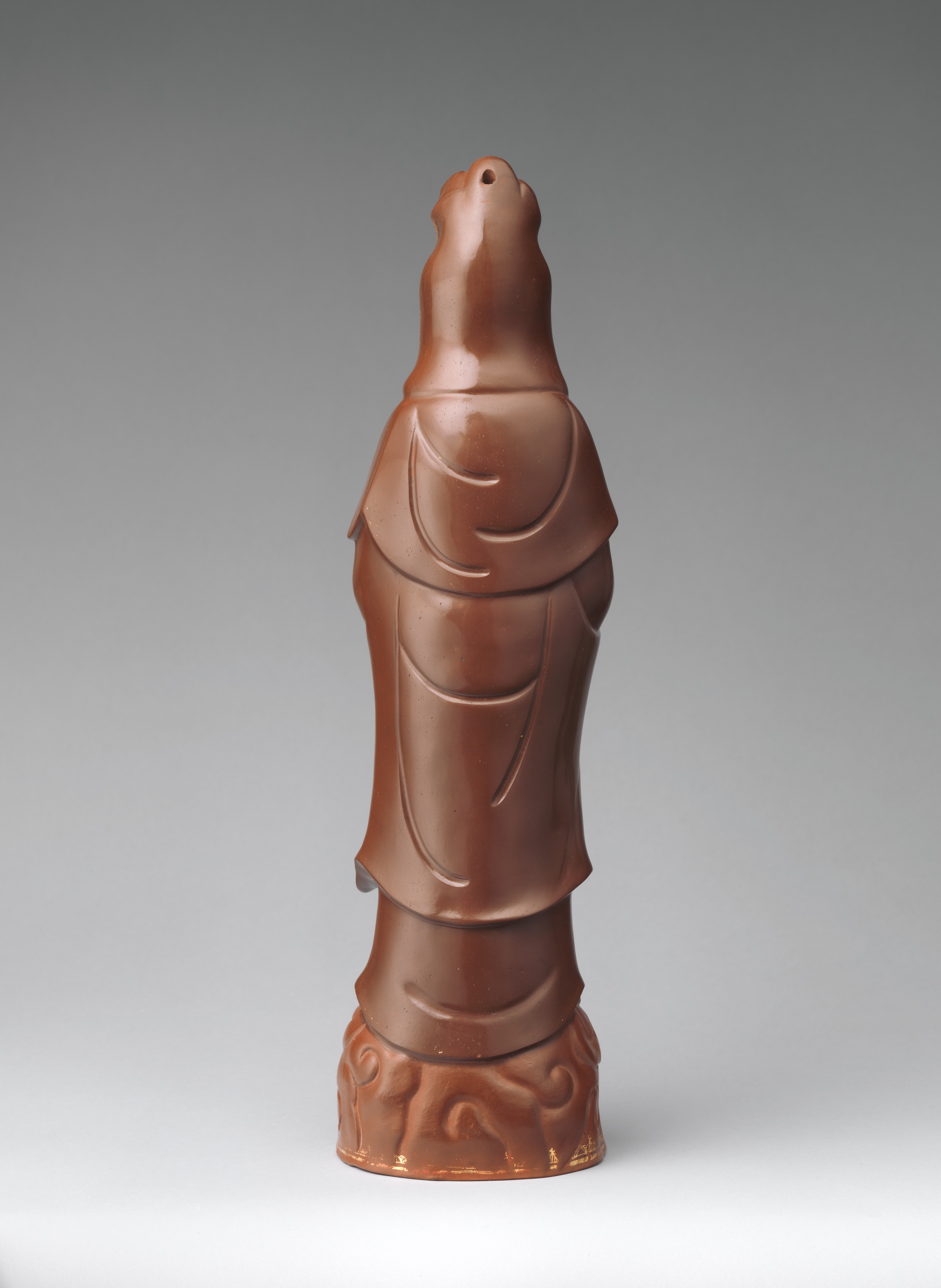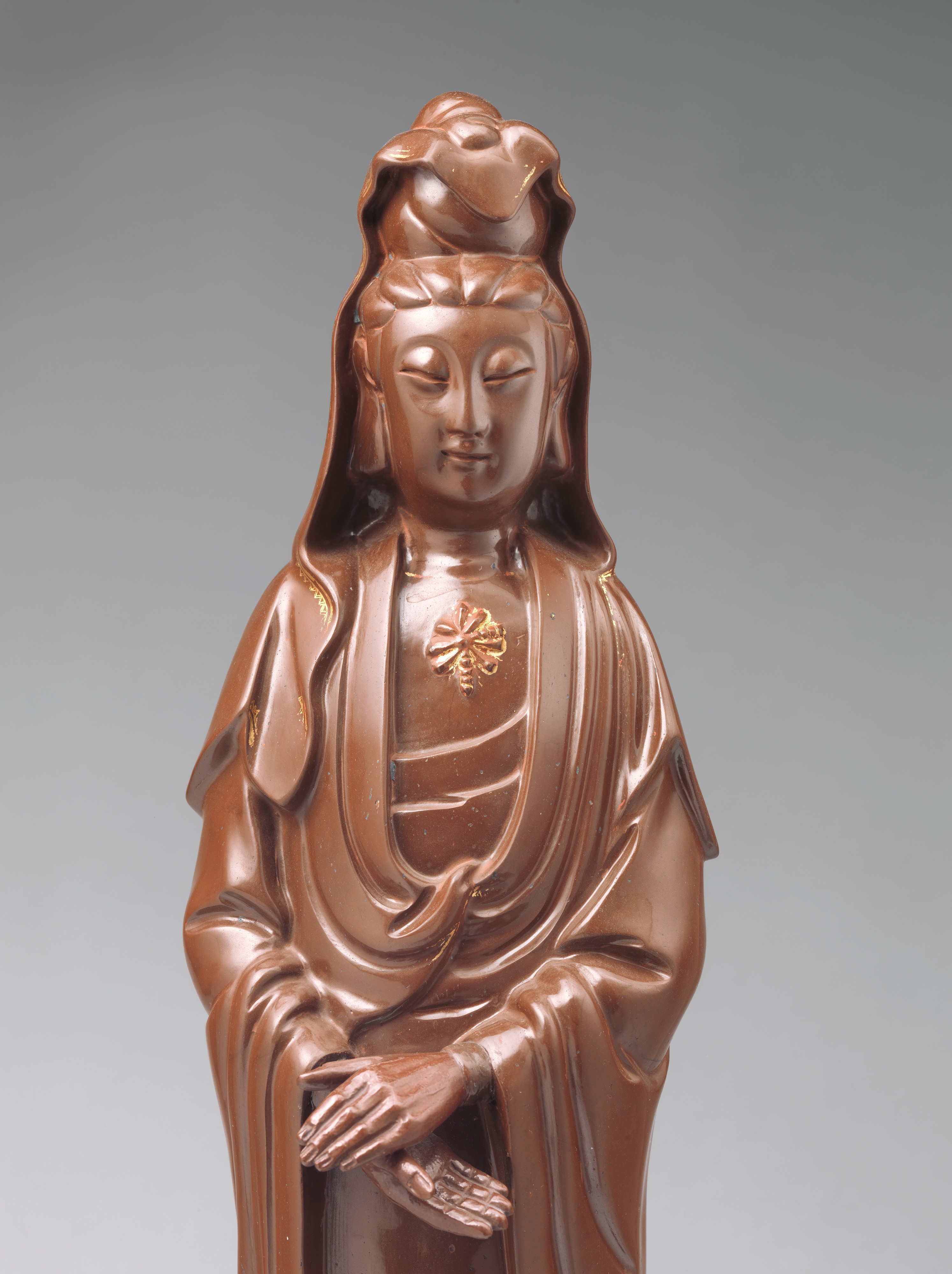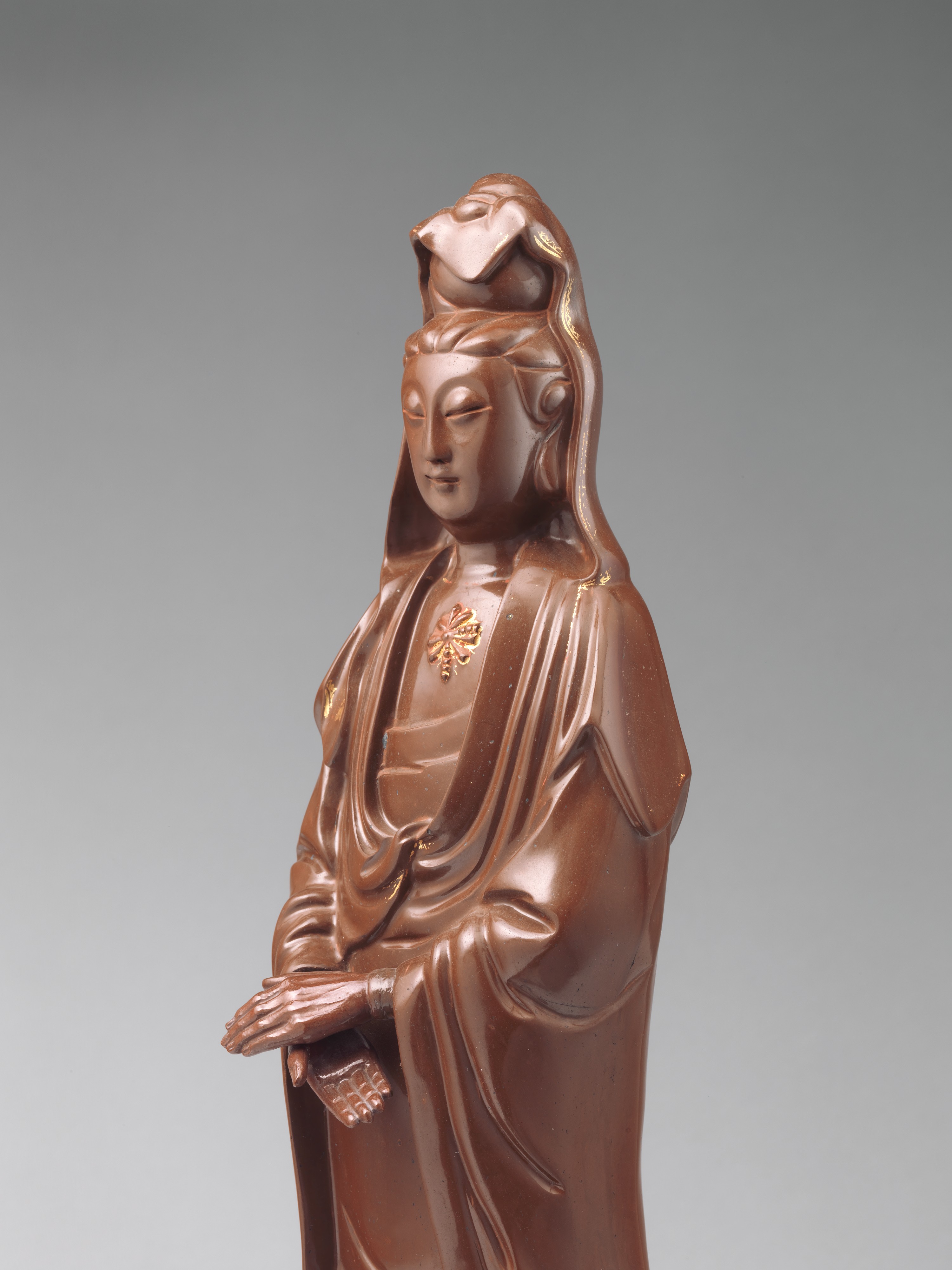Guanyin
Manufactory Meissen Manufactory German
Factory director Böttger Period
The early history of the German porcelain factory at Meissen, which was the first in Europe to produce true or hard-paste porcelain, has been extensively published.[1] The European quest to manufacture porcelain in the manner of the Chinese was long and complex, and it had been attempted at several ceramic factories throughout the Continent, but it was the experiments conducted in Dresden and in nearby Meissen during the first decade of the eighteenth century that led to the realization of this goal. After several years of experimentation to discover the necessary ingredients to make the white, translucent, and nonporous ceramic body, as well as to develop the kiln technology to fire it, the workers who were to establish the Meissen factory successfully produced a true porcelain in 1708—however, without glaze.[2] Ongoing experimentation resolved some of the technical challenges, and August II (1670–1733), commonly known as Augustus the Strong, elector of Saxony, king of Poland, was able to proclaim the founding of a porcelain factory in Dresden in January 1710. The equipment for the factory was transferred to Meissen, located approximately eighteen miles northwest of Dresden, in June of that year, and the factory that came to dominate the production of porcelain in Europe for the first half of the century was created.
The person most closely identified with discovering the formula for the hard-paste porcelain that Meissen would produce is Johann Friedrich Böttger (German, 1682–1719). Böttger's life has been well documented,[3] but the salient facts of his role in the development of porcelain are as follows: Böttger was apprenticed to an apothecary in Berlin at an early age but soon became fascinated with alchemy, a nascent form of chemistry that attempted the transformation of matter. After reports circulated that he had successfully transformed silver into gold in Berlin, Böttger fled to Saxony, presumably to avoid demonstration of this skill by request of the king of Prussia, Frederick I (1657–1713). His flight brought him to the attention of Augustus the Strong, who was eager to support Böttger's efforts to transform base metals into gold. Böttger's experiments to produce gold were conducted in collaboration with German physicist and mathematician Ehrenfried Walther von Tschirnhaus (1651–1708). In the process of developing materials to enable the transformation, Böttger and his collaborators fabricated a dense red stoneware. This stoneware body could withstand very high temperatures believed necessary for the alchemy to occur, and this discovery proved to be a critical step in the eventual production of porcelain, which required higher firing temperatures than other ceramic bodies.
With the eventual realization that Böttger's attempts at alchemy were not going to prove successful, his efforts were redirected, assisted by Tschirnhaus, toward the production of porcelain. Böttger's experiments with red stoneware were critical to his eventual discovery of porcelain, which led to an understanding of how to make clays fusible, as well as to the development of high-temperature kilns.[4] Efforts were made to refine the red stoneware, and it must have been quickly realized that their properties were similar to those of Chinese Yixing stonewares that were much appreciated by Augustus. The density of the stoneware body developed by Böttger allowed for a variety of decorative treatments, and along with the employment of specialist craftsmen, such as modelers, engravers, and polishers, the Meissen factory was able to present a variety of stonewares for sale at the annual Easter Fair in Leipzig in 1710.
While the factory soon developed a sophisticated repertoire of Baroque forms in red stoneware, many of which were derived from contemporary silver shapes, some of the earliest works produced in the new material were copies of Chinese ceramics in Augustus’s collection. Among the first objects made at Meissen in red stoneware is the figure of Guanyin, the Chinese goddess of mercy and compassion. The Meissen figure derives directly from a Chinese, white-porcelain figure of Guanyin that was in the Saxon royal collections, an example of which must have been among the eight Chinese porcelains sent by Augustus to Böttger for copying on November 28, 1709.[5] The Chinese figures of Guanyin were produced in Dehua, a village in Fujian province, and the white-porcelain sculptures and wares made for export became known in Europe as blanc de chine (white from China). Along with Chinese blue-and-white porcelain, so-called blanc de chine was produced in enormous quantities and avidly purchased by those able to afford it. Representations of Chinese deities were especially popular, and figures of Guanyin could be found in many of the European princely houses.[6] It is likely that plaster molds were taken from Augustus’s Chinese original from which the red stoneware version was cast. The resulting figure was thus a very close copy of the Chinese example, albeit reduced in scale. The stoneware body shrank during the drying process before firing and again in the kiln, making the Meissen copies smaller in all dimensions. The Porzellansammlung, Staatliche Kunstsammlungen Dresden retains an original Chinese porcelain Guanyin, a Meissen red-stoneware version, and a Meissen hard-paste porcelain example made several years after the red-stoneware figure, and a photograph of the three pieces together illustrates the difference in dimensions.[7]
The red-stoneware versions of Guanyin and other Chinese deities produced at Meissen are highly accomplished, especially as they are among the earliest products of the young factory. While the majority of the detail derives from the cast taken from the Chinese original, small differences in detail in the stoneware versions must be due to the finish work executed when the damp clay was in the so-called leather hard state. Many if not all of the red-stoneware Guanyins are polished, lending a glossy surface to the figure.[8] One of the many desirable characteristics of the stoneware body developed by Böttger was its ability to be polished, or indeed faceted or engraved, due to the extreme hardness of the fired body. The factory produced a wide range of objects, both decorative and useful, during the approximately three-year period when the red stoneware was produced in significant quantities. However, Meissen’s successful commercial introduction of hard-paste porcelain at the Leipzig Easter Fair in 1713 presaged the decline of stoneware production at the factory.[9] Even though red stoneware had been developed as a by-product of Böttger's search for a true porcelain body, it proved to be a medium that not only reflected a major technological advance but also one in which objects of remarkable sophistication were produced.
Footnotes
(For key to shortened references see bibliography in Munger, European Porcelain in the Metropolitan Museum of Art. NY: The Metropolitan Museum of Art, 2018)
1 Some of the most significant or helpful literature includes Ruckert 1966; Bursche 1980; I. Menzhausen 1990; Blaauwen 2000; Daberitz and Eberle 2011; Eberle 2011b; Pietsch 2011.
2 Eberle 2011b, p. 16.
3 Syndram and Weinhold 2009; Eberle 2011b; Pietsch 2011, pp. 15–19.
4 Chilton 1988, p. 13.
5 Antoinette Fay-Halle in Cabinet de porcelaines 2001, p. 33.
6 Ayers 2002, p. 29.
7 Anette Loesch in Pietsch, Loesch, and Strober 2006, pp. 76–77. As the Chinese porcelain figure in the photograph is significantly larger than the two Meissen versions, it is possible that a slightly smaller Chinese original served as the prototype.
8 There are also traces of gilding on this figure of Guanyin, indicating that the edges of the robe, the rosette on her breast, and the base were decorated with decorative bands of gilding.
9 According to Meredith Chilton, Meissen stoneware, sometimes known as Böttger stoneware, was produced for approximately a ten-year period, and examples appear on the factory’s 1731 price list; Chilton 1988, p. 14.
Due to rights restrictions, this image cannot be enlarged, viewed at full screen, or downloaded.
This artwork is meant to be viewed from right to left. Scroll left to view more.





